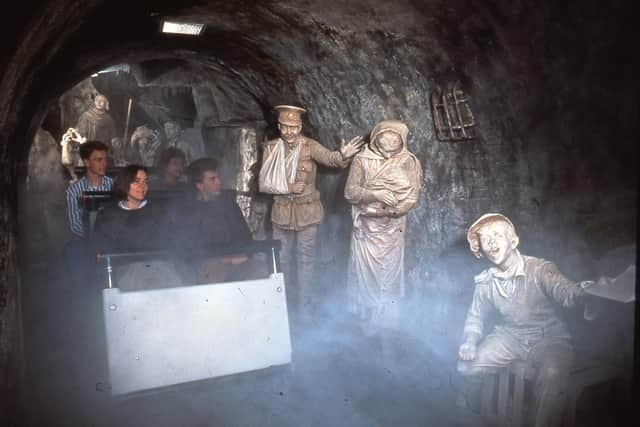Why Jorvik Viking Centre in York is much more than just a museum - Jayne Dowle
When I went for the first time, on a school trip, I was completely entranced. And believe me, nothing much impressed me in my sulky mid-teens.
Indeed, if ever I smell fresh apples, I’m immediately transported back to Jorvik, to the excitement of seeing the animated figures, dressed in garments coloured with vegetable dyes (we learnt), cooking and working and going about their lives under the ground as modern York bustled by overhead.
Advertisement
Hide AdAdvertisement
Hide AdI wanted to believe that these ‘people’ were real and still living amongst us – through DNA, they are. I’ve been back to Jorvik several times since, to take my own children, and the magic never fades – if anything, recent technological improvements make it even more entrancing.


It’s reported that to date, there have been more than 20 million visits to Jorvik. How many of those visitors, of all ages, have been inspired to study history, or explore their own town, village or family as a result?
History was already one of my favourite subjects at school (it was a short list), but Jorvik was something else – it brought the past alive in a way that I had never imagined was even possible. The whole place, launched as it was in the mid-80s when everyday life was very tough in my part of Yorkshire, seemed so amazing. I’ll admit it blew my mind, with its recorded cries of ‘real people’ speaking in voices not unlike our own.
When Jorvik opened, in April 1984, the aim of its original designer, Wakefield-born John Sutherland, was to bring history alive, not confine the past to dusty glass cases.
Advertisement
Hide AdAdvertisement
Hide AdAs a young lad – who used to play truant from maths class at his grammar school to go to local museums, galleries and the pictures – Sutherland wondered why museums couldn’t be more like films?
Going on to become a graphic designer, cartoonist, animator and to work in television production, Sutherland was absolutely pivotal to the JORVIK vision. Engaged by the York Archaeological Trust to create a new museum for York on the site of a Victorian confectionary factory, Sutherand came up with the idea of ‘time cars’.
Like a fairground ride, these cars would take visitors back to the 10th century, travelling through the streets of Jorvik (the Viking name for York), visiting the homes and workshops of ordinary people and experiencing the sights and smells of a typical day in the life of the city more than a thousand years ago – complete with other, more noxious smells than apples. I remember the boys in our party giggling at the cesspits.
Jorvik was far more than entertainment however. It put York firmly on the modern map as a forward-thinking historic location that welcomed visitors – now more than 8.9m a year, according to tourist organisation Make it York – with the visitor economy adding £1.7bn in total to the city.
Advertisement
Hide AdAdvertisement
Hide AdAlso, it reminded us that we all play a part in history. Jorvik is just a snapshot of a certain period of time, but the arrival of the Vikings in our region changed society. Subsequent demographic waves have contributed over the centuries to what makes Yorkshire what it is today.
And, crucially, Jorvik heralded a significant shift in the democratisation of heritage and history.
The catalyst for the attraction was an overwhelming interest from the public in the excavations of a 10th century site in York’s Coppergate area carried out between 1976 and 1981. This hugely important work yielded treasures, unprecedented understanding of how Norse culture contributed to not just our region, but the country and its role as a trading nation.
In total, more than 40,000 items were uncovered buried in the peaty layers, from timber frames of Viking-era buildings to animal bones, jewellery, leather shoes and tools. Imaginations were captured. People wanted to find out more. And crucially, to see and experience everything they could.
Advertisement
Hide AdAdvertisement
Hide AdPerhaps at the time, this thirst for knowledge had been under-estimated by history professionals and academics. Sutherland’s gift was to design Jorvik to appeal to all five senses; sight, sound, touch, smell and even taste.
I’m sure at the time snootier historians would have huffed at clambering into moving cars. However, Sutherland’s commitment to popularism has won the day and made appreciation of the past something we can all enjoy, with or without academic qualifications.
Here's to the next 40 years then Jorvik.
Comment Guidelines
National World encourages reader discussion on our stories. User feedback, insights and back-and-forth exchanges add a rich layer of context to reporting. Please review our Community Guidelines before commenting.
